Five food resolutions for 2021 (that aren’t about dieting)
January 10, 2021What are your resolutions for 2021?

For many, 2020 was their first time thinking deeply about food: where it comes from, who grows it, and the scary possibility of not having it readily available. It was heartening to see so many people think critically about the food system and you can make sure this thinking continues in 2021. This year, renew your relationship with food with five food resolutions for 2021.
When it comes to food and the way its grown, there are things we can all work on—whether we started this journey decades ago or we are just beginning to think about these issues.
Here are five food resolutions for 2021!
Know where your food comes from
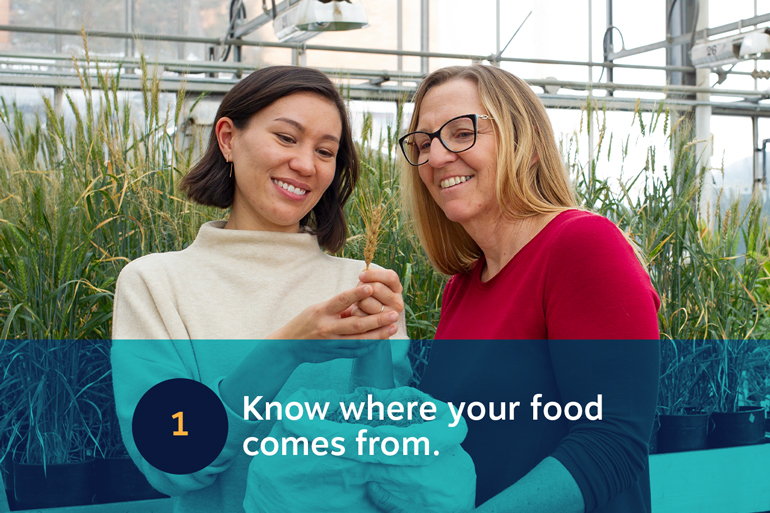
Often by the time food makes it to our plates, it has travelled far from where it was grown. We don’t know who grew it, nor do we know the whereabouts of the land that gave it life.
This year, (re)connect with food by getting to know the local folks who grow it: farmers! Here are a few ideas to get you started:
- Look into getting a community supported agriculture (CSA) share.
- Shop at your local farmers’ market when it’s safe to do so.
- Buy seeds for your garden directly from a farmer. Here’s a list of seed producers organized by province to get you started. Seedy Saturdays and Sunday—many are virtual this year—are also a great place to meet the farmers who grow good seeds. Be sure to keep an eye on Seeds of Diversity Canada’s list of all the events across the country to find one in your area.
- Volunteer at a farm near you. Organic farmers always need people to pull weeds!
Let’s all learn a bit more about where our food comes!
Minimize your carbon foodprint
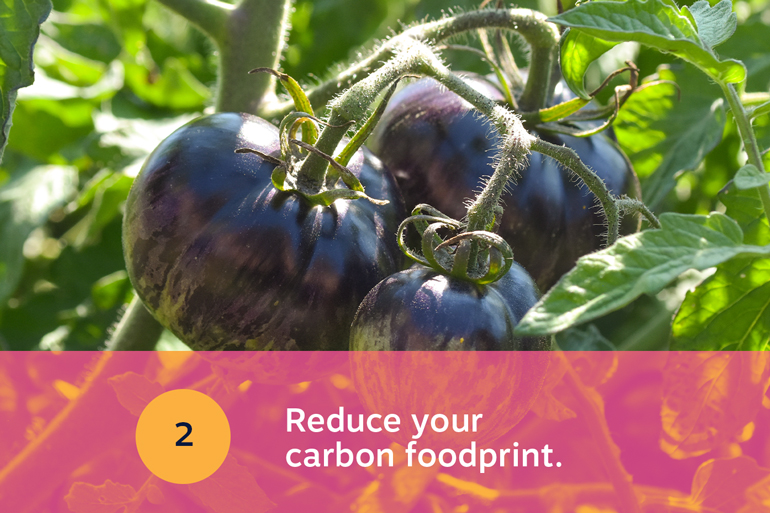
There are lots of ways to take small steps toward eating climate-friendly food. But keep in mind that the globalized, industrialized, corporate food system wasn’t built to make it easy or affordable to get sustainable food. So be kind to yourself. Not all these suggestions are realistic for everyone. Only do what works for you!
Here are some things to try this year:
- Buy produce when it’s in season.
- Support farmers in your region and buy local. Your fruits and veggies will have travelled less distance to get to your plate, reducing greenhouse gas emissions from transport.
- Add more vegetarian meals to your diet.
- Source humanely raised meat from local, organic farmers. Good grazing techniques can contribute to a sustainably run farm that works with nature, builds soil health and sequesters carbon.
- Choose ecologically grown food when you’re able to.
- Grow your own food!
- Remember, your individual choices make a difference. But we need policy to support farmers growing food in Earth-friendly ways. Support Farmers For Climate Solutions, a national alliance of farmer organizations and supporters—including SeedChange—working to advance agricultural policies that will help farmers in Canada mitigate and adapt to climate change.
Buy seeds from local farmers who use sustainable growing practices
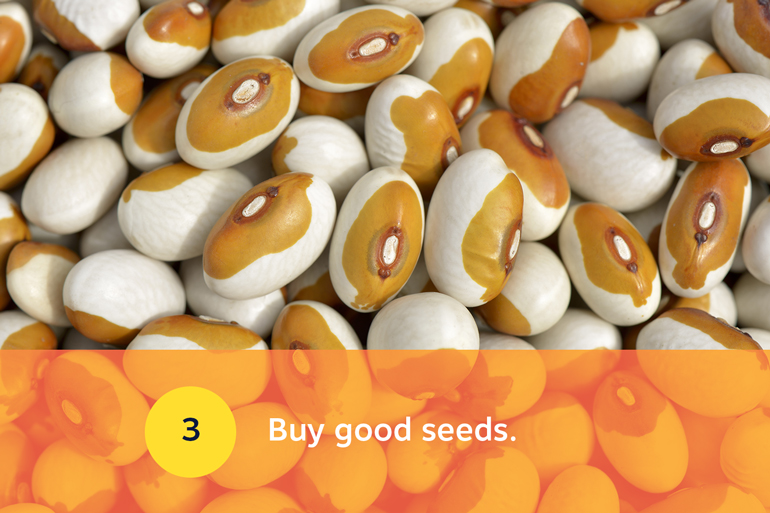
Not all seeds are created equal. Some are grown in Earth-friendly ways, some are not. Some seeds will grow into plants that can handle drought, some will not. Some are free to save and share, and some for legal or biological reasons, aren’t.
This resolution challenges us to source seeds while keeping these things in mind.
Here are some resources to get you started:
- If you know what crops and varieties you’re looking for, check out the Ecological Seed Finder tool to find the best locally adapted seeds in your region.
- Browse the seed catalogues of farmers in your region using this list of seed producers organized by province.
- Meet your seed farmer virtually (or in a few cases this year, in person) at your local Seedy Saturday. Seeds of Diversity Canada has an up to date list of the events—most virtual—coming up from coast to coast to coast.
Save your own seeds
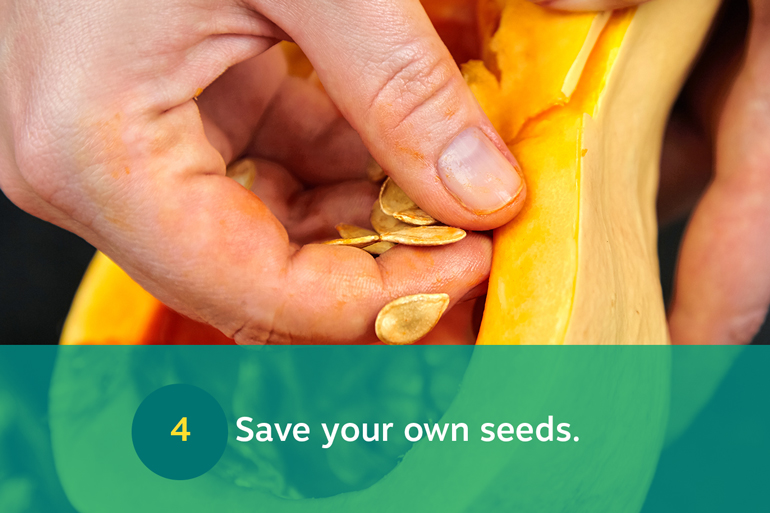
Seeds are powerful packets of potential. A good seed doesn’t just produce good food; it also grows more good seeds you can save, share and replant. Saving your own seeds can be tricky and take a bit of extra time. But seed saving can also extend your time in the garden, introduce you to a new part of a plant’s life cycle, and ensure you have seeds from your favourite crop varieties for the next growing season.
Not sure where to start? The Community Seed Network (our project with Seed Savers Exchange) has resources available for beginners and experienced seed savers alike.
To try your hand at seed saving for the first time, easy crops to start with are beans. Sign up for step-by-step bean planting, growing and saving tips and we’ll send you gardening help starting this spring.
Do you already save your own seeds? Then these seedy resolutions from farmer, seed producer and friend of SeedChange, Daniel Brisebois, might just be for you.
Support farmers
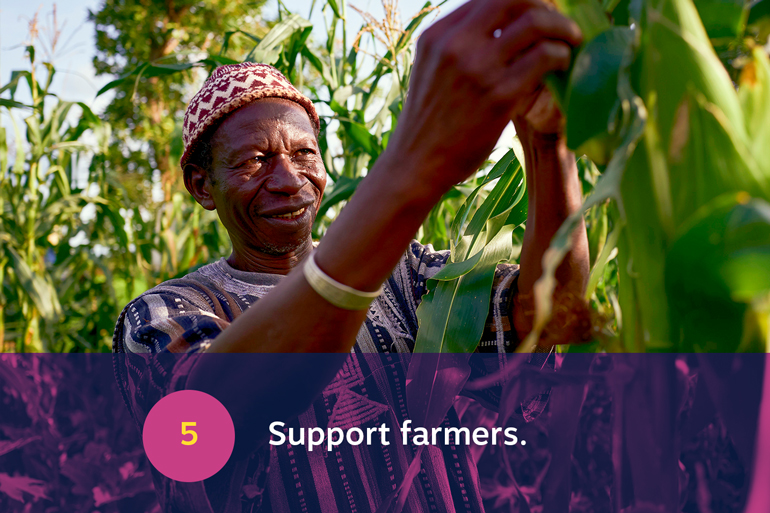
Farmers’ rights are under threat.
All around the world, multinational corporations increasingly control access to seeds and land. Women and Indigenous farmers face discrimination and extra barriers to land and resources.
In Canada, food security depends on migrant farm workers, who are not afforded the same rights as others who live and work in the country, and often work in poor conditions. And accessing land, funds, and credit is harder for Black and racialized farmers.
We need a shift in the way we grow our food. Industrial agriculture is a major contributor the climate crisis, which ultimately, is making it harder for farmers everywhere to do their jobs. Plus, large-scale industrial agriculture accelerates biodiversity loss and contaminates our soil and water with synthetic fertilizers and pesticides.
Luckily, there are farmers working to make this shift happen. But with all the barriers farmers face, they need support.
How can I support farmers?
- Advocate for food policies that build food sovereignty.
- Use your purchasing power: buy local and organic when possible.
- Get a CSA share.
- Source your seeds from a local, ecological farmer.
- Support organizations working with farmers around the world to shift the way we grow our food.
- Support Indigenous seed keepers through Sovereign Seeds.
- Donate to SeedChange today!
BONUS: Build food sovereignty

Food sovereignty is the right peoples and communities to healthy and culturally appropriate food produced through ecologically sound and sustainable methods, and their right to define their own food and agriculture systems.
Around the world, farmers are essential for building food sovereignty in their communities from the ground up. And since we’re all eaters, food sovereignty involves everyone! Taking any of the actions described in resolutions one through five will contribute a little bit.
But we need policies that support farmers and communities in their work toward food sovereignty. That means advocating for the support farmers are asking for.
Join our Action Alerts list and we’ll let you know when it’s time to take action to defend farmers’ rights. Sign up below.